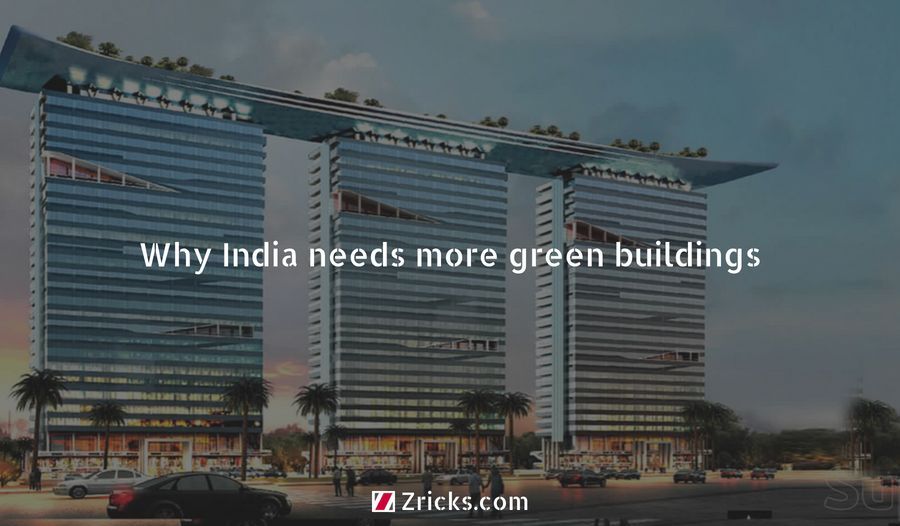Why India needs more green buildings?
Share Why India needs more green buildings?
With urbanization enveloping India, the growth of the real estate sector is bound to be dogged by higher energy demands, sooner than later. Given the fact that buildings avail about 40% of the energy consumption reported worldwide, real estate developers have now shifted the focus to developing and designing real estate that incorporates energy-efficient features that reduce power consumption. Sustainable practices for energy consumption is the driving force behind this trend in the real estate sector.
Energy-efficient real estate does not come at a cheap price. It requires higher capital investment initially and that is why most companies avoid it. However, in the long run, there are tremendous benefits in terms of operational costs, energy saving and environment. The Energy and Resources Institute (TERI) has reported that the cost of erecting a ‘green –building’ can be recovered within 2-3 years. As opposed to this, the buildings which fail to conserve energy are bound to increase operation costs. The cost-benefit ratio works better in case of projects under development, as compared to a developed building which is being retro-fitted with energy-efficiency means.
Generally buildings rely on multiple systems for lighting, heating and other functions that consume huge amounts of electricity whereas green buildings smartly interlink these services to reduce operational costs and energy consumption. Energy is conserved with the help of simple design plans that optimize use of natural lighting. This includes strategically placed sunshades, size and location of doors and windows, etc. Ventilation and space-conditioning helps in regulating the temperature within the premises, preventing overheating and overcooling especially during peak summer and winter seasons. Thus minimising the use of energy to a great extent.
The architecture of the building may also be planned in such a way that it is not directly under the influence of the Sun during summers, and even traps heat in winter! It is estimated that such green building practices could result in as much as 30% savings for the consumers.
Energy-efficient buildings all have a common feature of having a compact structural blueprint. This principle is followed in its surface area to volume ratio. The lesser the value of the ratio, the lesser the heat conduction. Green buildings are ideal for locations that have a perennial hot and dry weather for the major part.
However, the practice of erecting any real estate project as a green building, is not as mainstream in the Indian market. Even as of now, majority of the real estate buildings coming up are not green buildings, and only about 1% of India’s current real estate footprint, can be labelled as eco-friendly. The rating systems such as Indian Green Building Council or IGBC, and Green Rating for Integrated Habitat Assesement or GRIHA are there to evaluate the energy-efficiency of buildings, and these organizations are doing a great job in promoting environment-friendly practices in the country.
However, the primary reason behind low traction in building eco-friendly buildings is that developers do not yet see any monetary gain from building a real estate project as per green compliance norms. The additional attribute of having to invest capital in constructing a building as per energy conservation norms does not provide real estate developers the incentive to contribute to the large-scale adoption of energy-efficiency in the construction industry. This scenario calls for policies that incentivize incorporation of eco-friendly practices in the projects.
Request a Call Back

